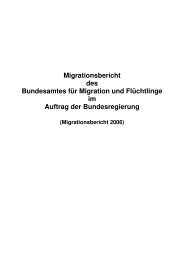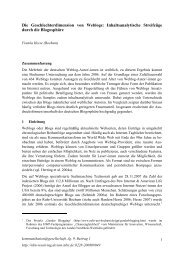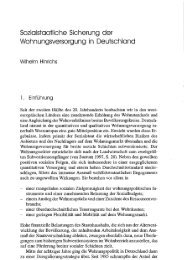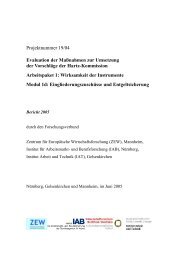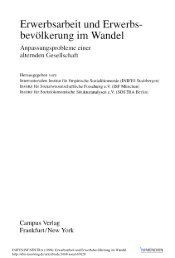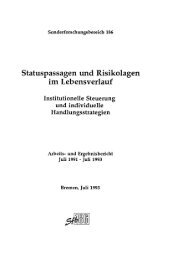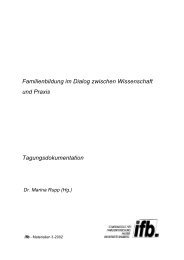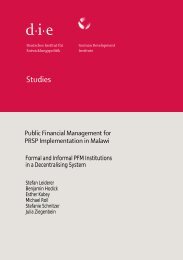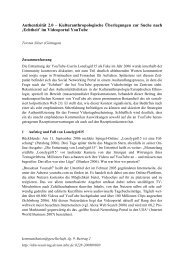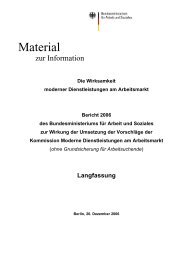Volltext - SSOAR
Volltext - SSOAR
Volltext - SSOAR
- TAGS
- volltext
- ssoar
- www.ssoar.info
Sie wollen auch ein ePaper? Erhöhen Sie die Reichweite Ihrer Titel.
YUMPU macht aus Druck-PDFs automatisch weboptimierte ePaper, die Google liebt.
and others as consequences or effects the hitherto developed substantive<br />
codes can be integrated to a causal model.<br />
In the book “Theoretical Sensitivity“ GLASER presents an extended list of<br />
terms which can be used for the purpose of theoretical coding loosely structured<br />
in the form of so called theoretical “coding families“. Thereby various<br />
theoretical concepts stemming from different (sociological, philosophical or<br />
everyday) contexts are lumped together, as for example<br />
12<br />
• terms, which relate to the degree of an attribute or property (“degree<br />
family“), like “limit“, “range“, “extent“, “amount“ etc.,<br />
• terms, which refer to the relation between a whole and its elements<br />
(“dimension family“), like “element“, “part“, “facet“, “slice“, “sector“,<br />
“aspect“, “segment“ etc.,<br />
• terms, which refer to cultural phenomena (“cultural family“) like “social<br />
norms“, “social values“, “social beliefs“ etc.,<br />
and 14 further coding families which contain terms from highly diverse theoretical<br />
backgrounds, debates and schools of philosophy or the social sciences.<br />
Thereby many terms can be subsumed under different “coding families“: the<br />
term goal, for instance, is part of a coding family referring to action strategies<br />
(“strategies family“) and also belongs to a coding family referring to the relation<br />
between means and ends (“means-goal family“).<br />
Thus GLASER offers an equipment (one dares to say: a hotchpotch) of concepts<br />
which are meant to guide the researcher in developing theoretical sensitivity<br />
but fails to explain how such terms can be used and combined to describe<br />
and explain empirical phenomena. That this task remains extremely<br />
difficult and can hardly be achieved by applying single coding families can<br />
be easily shown with regard to the first and most important coding family referring<br />
to causal relations. The problem with that coding family is that general<br />
notions of cause and effect can never sufficiently specify which types of<br />
events in a certain domain have to be regarded as causes and which ones are<br />
to be seen as effects. Having terms denoting causal relations (like “cause“,<br />
“condition“, “consequence“ etc.) at hand is in itself not sufficient for the development<br />
of causal models. Using such a coding family one could consider<br />
in principle all events as causes and effects which covary to a certain degree.<br />
To formulate a causal model about the relation between certain specific<br />
events it would be necessary to use at least one substantial (i.e. sociological,<br />
psychological ...) category in the development of a causal explanation which<br />
provides a clue about which types of events regularly covary. In order to develop<br />
theoretical models about empirical phenomena formal or logical concepts<br />
(like “causality“) have to be combined with substantial sociological<br />
concepts (like “social roles“, “identity“, “culture“). A major problem with<br />
GLASER's list of coding families is that it completely lacks such a differentiation<br />
between formal and substantial notions. Thus the concept of theoretical




